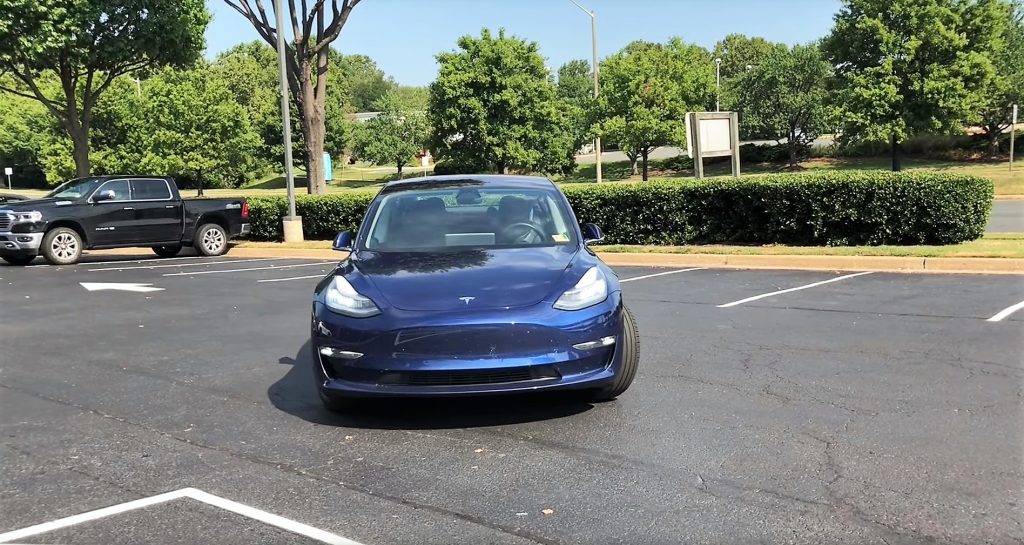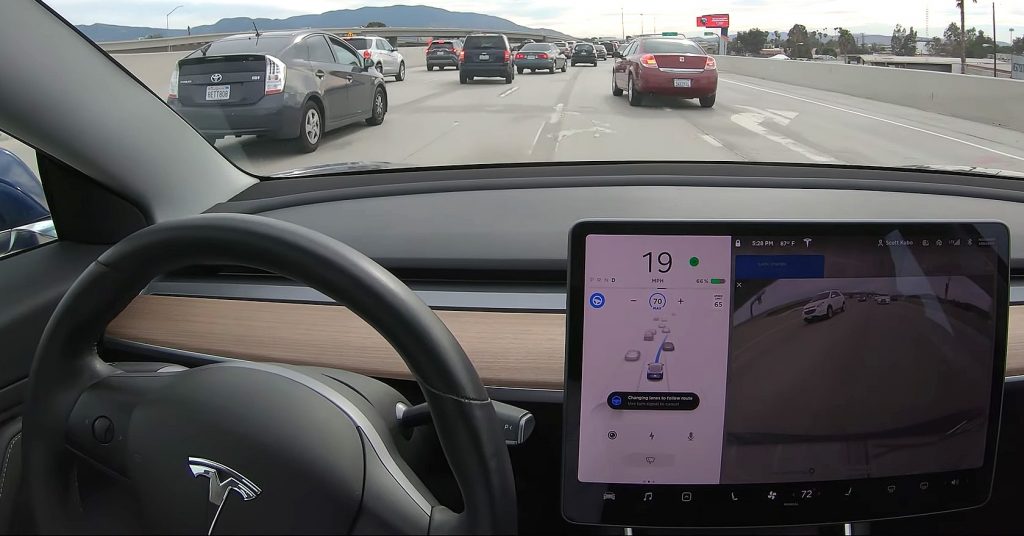Tesla Model S owner Steven Peeters believes in Elon Musk’s vision of a Full Self-Driving future. Being in the IT field for 20 years, the independent consultant is fond of his Model S’ tech capabilities, particularly the improvements that Tesla has been rolling out to his vehicle’s Autopilot driver-assist system. Since replacing his Model S P85D with a P100D, Steven has kept a close eye on the evolution of Tesla’s Autopilot suite, which has grown into a robust driver-assist system that enables lane-keeping, lane-changes, and with the Navigate on Autopilot update, highway on-ramp to off-ramp capabilities.
Unfortunately for the Model S owner, he also happens to reside in Europe, which adjusted its rules for driver-assist systems under its new UN/ECE r79 regulations. Tesla has been required to adjust its vehicles’ features according to these regulations, which resulted in several of Autopilot’s features being restricted. In a message to Teslarati, Peeters explained that these regulations adversely affects the user experience of Tesla owners, to the point where some driving maneuvers that Autopilot was already proficient at took several steps back.
Peeters, who runs a Tesla-themed YouTube channel that chronicles his Autopilot tests and his family road trips on his Model S, took it upon himself to perform a deep dive of Europe’s UN/ECE r79 regulations, in an attempt to see exactly how the region’s updated rules negatively affected the electric car maker’s driver-assist systems. Explaining his efforts, the Model S owner stated that it is pertinent to raise awareness on these regulations, especially since these could put a roadblock for the eventual rollout of Tesla’s Full Self-Driving features. “I wanted to raise awareness that we are facing this issue and that at the moment, there is no obvious path toward FSD in Europe,” he said.

It should be noted that when Europe has no regulation for a specific driver-assist or automated feature, that specific capability is prohibited by default. Features such as Navigate on Autopilot’s automatic lane changes, for one, has no regulation in Europe, which immediately makes it unusable on the region’s roads. And this is just the tip of the iceberg.
Enhanced Summon
Looking further into the regulations, Peeters explained that Remote Control Parking features such as Tesla’s Summon cannot exceed more than 6 meters (19.6 feet). This strict regulation stands in the way of Tesla’s upcoming Smart Summon update, which will allow drivers to summon their vehicle around a 50-meter (150-foot) radius. Elon Musk has noted that Smart Summon is already being released to users in the company’s Early Access Program, and that the feature will roll out in the upcoming V10 update. With Europe’s regulations in the picture, the feature will be automatically prohibited once it is released.
Navigate on Autopilot
The limitations of Europe’s regulations affect Navigate on Autopilot’s off-ramp capabilities. Under the updated rules, turns using driver-assist systems such as Autopilot are only regulated up to 63 km/h or 39.33 mph. According to the Model S owner, this results in Autopilot (at least in some instances) assertively reducing its speed while navigating a turn, which could make the driver-assist system behave as if it was not confident in the maneuver. Steven’s previous Autopilot tests suggest that Tesla is playing it safe to meet these regulations by allowing Autopilot to stay below the maximum speed limit, but this has the effect of the driver-assist system losing its refined nature while navigating a curve as a result.

Lane Changes
Perhaps the most notable feature affected by Europe’s updated regulations is Autopilot and Navigate on Autopilot’s lane-changing capabilities. Regulations currently define five steps for assisted lane changes: 1) the activation of blinkers; 2) the lateral movement of the vehicle; 3) the actual lane change maneuver; 4) the resumption of lane-keeping functions, and finally; 5) the deactivation of blinkers. Tesla follows this to a tee.
According to Europe’s new regulations, lane change maneuvers must not be initiated before a period of 3 seconds and not later than 5 seconds after deliberate driver action. This means that once initiated, the lane change maneuver must be finished in less than 5 seconds. This regulation becomes an issue in real-world scenarios. For example, if drivers start indicating a lane change and there’s a car in an adjacent lane that won’t give way, the maneuver must be aborted within 5 seconds. If a Tesla hits the 5-second mark while this is happening, the vehicle must abandon the lane change attempt and return to its original lane. These restrictions, according to Peeters, have resulted in his Model S swerving to return to the center of its original lane as soon as it hits the 5-second mark.
A Tesla owner’s call for change
These are but a few of the regulations that are currently crippling the capabilities of Tesla’s Autopilot system in Europe. Other discussions and a more in-depth analysis of the UN/ECE r79 regulations are covered by Peeters in a deep dive video, which could be viewed below. As a Tesla owner and as a believer in an eventual full self-driving future, the Model S owner hopes that something could be done to allow Tesla’s driver-assist technologies to operate in Europe without limitations. A petition has already been started to address these issues, and so far, around 7,900 people have signed up to express their support (the petition could be accessed here). Ultimately, Steven notes that as a Tesla owner, he simply wishes that his vehicle could function the way it is intended to.
“It is quite frustrating seeing all those videos from the US of Teslas doing wonderful things, while at the same time, we are stuck with a bad version of it, purely because of these regulations. Enhanced summon is out of the question for us, taking 90-degree turns is a dream, and NoA without confirmation for lane changes requires several regulations to be altered if it will ever happen. I’m trying to find a way to actually get them changed for the better,” Peeters said.
Watch the Model S owner’s deep dive into Europe’s UN/ECE r79 regulations in the video below.
H/T Armand Vervaeck.

<!–
–>
var disqus_shortname = «teslarati»;
var disqus_title = «Tesla Autopilot Europe restrictions explained: How regulations are hindering a Full Self-Driving future»;
var disqus_url = «https://www.teslarati.com/tesla-autopilot-europe-restrictions-explained-video/»;
var disqus_identifier = «teslarati-112641»;

